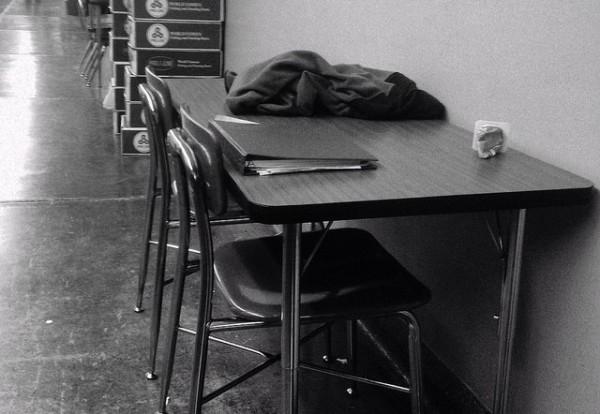
Originally Posted September 14, 2016.
It’s September, which means students are zipping up their backpacks and sharpening their pencils for a new school year. For many kids, however, disciplinary actions like suspension and detention make school feel less like a place of learning and more like a minefield for getting into trouble. Some schools are experimenting with restorative justice practices to address disruptive behavior in lieu of more traditional means that often mean missing class. These new policies tend to take a lot of time and effort to implement, and very little research has been done regarding the efficacy of these restorative justice initiatives. However, research points to an array of problems with the more traditional, exclusionary methods educators have relied on in the past.
Many schools have increased their use of punitive discipline and zero tolerance policies, despite drops in school-based delinquency. A shift in school disciplinary procedures would likely result in fewer days of missed tests and lectures for African American students, who are the most likely to receive suspension as a punishment in schools, especially in more racially diverse schools. Research shows that black students are more likely to receive the brunt of disciplinary action when overall delinquent behavior in school is low because teachers and administrators perceive them as threatening day-to-day proceedings.
- Tamela McNulty Eitle and David James Eitle. 2004. “Inequality, Segregation, and the Overrepresentation of African Americans in School Suspensions.” Sociological Perspectives 47(3): 269-287.
- Kelly Welch, and Allison Ann Payne. 2010. “Racial Threat and Punitive School Discipline.” Social Problems 57(1): 25-48.
Educators often evaluate certain behaviors and mannerisms like punctuality, quiet voices, and particular styles of dress as indicative of being good students. These perceptions of good behavior often stem from teachers’ raced and classed biases regarding what a model student looks like. But many of the characteristics that teachers think make bad apples, like tardiness and attendance inconsistencies, are in fact the same red flags that a student is at risk of dropping out of school. And new research finds that exclusionary punishments like detention and suspension lead to lower test scores and increased tensions between teachers and students.
- Brea Perry and Edward W. Morris. 2014. “Suspending Progress: Collateral Consequences of Exclusionary Punishment in Public Schools.” American Sociological Review 79(6): 1067-1087.
- Edward W. Morris 2005. ““Tuck in That Shirt!” Race, Class, Gender, and Discipline in an Urban School.” Sociological Perspectives 48(1): 25-48.

Comments 1
corey dolgon — September 21, 2016
great start. but is this part one? where's the research on restorative justice???